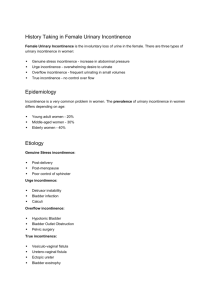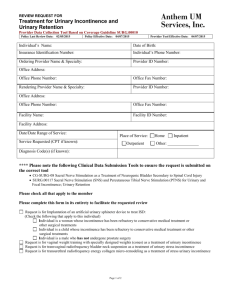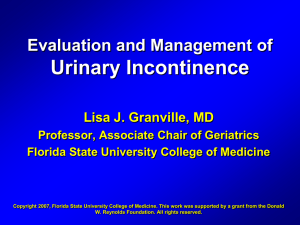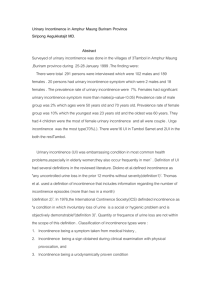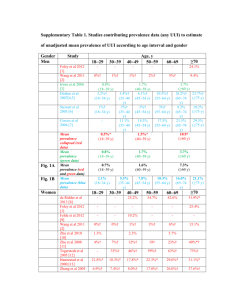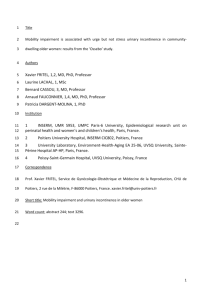Issues related to diagnosis and management of the elderly patient
advertisement
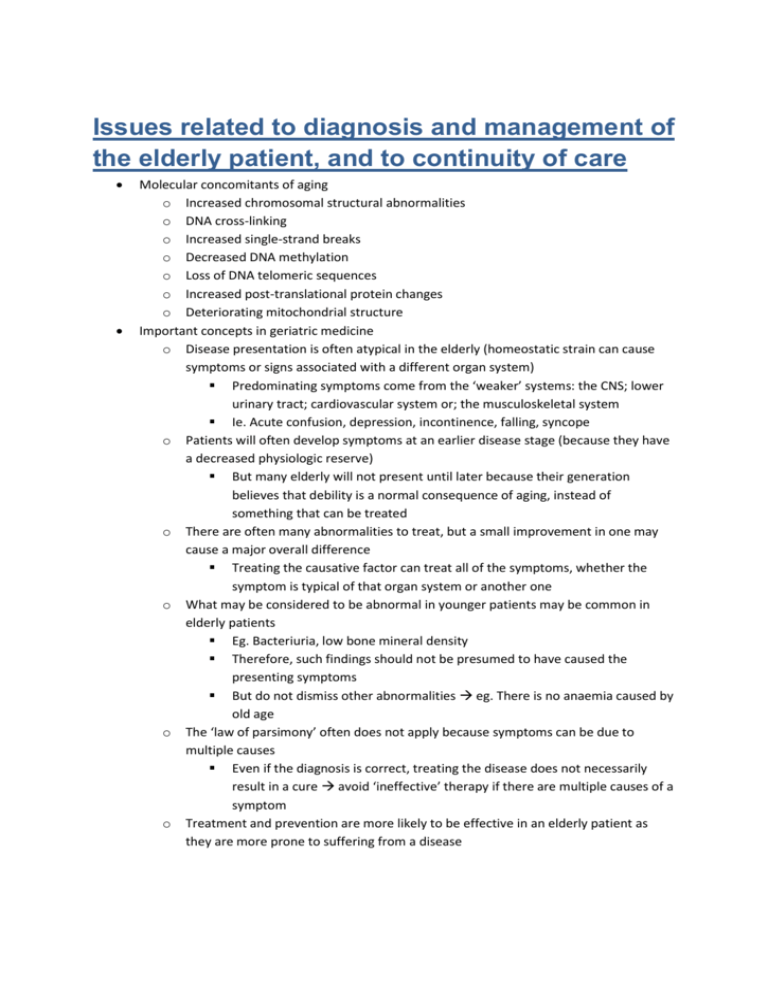
Issues related to diagnosis and management of the elderly patient, and to continuity of care Molecular concomitants of aging o Increased chromosomal structural abnormalities o DNA cross-linking o Increased single-strand breaks o Decreased DNA methylation o Loss of DNA telomeric sequences o Increased post-translational protein changes o Deteriorating mitochondrial structure Important concepts in geriatric medicine o Disease presentation is often atypical in the elderly (homeostatic strain can cause symptoms or signs associated with a different organ system) Predominating symptoms come from the ‘weaker’ systems: the CNS; lower urinary tract; cardiovascular system or; the musculoskeletal system Ie. Acute confusion, depression, incontinence, falling, syncope o Patients will often develop symptoms at an earlier disease stage (because they have a decreased physiologic reserve) But many elderly will not present until later because their generation believes that debility is a normal consequence of aging, instead of something that can be treated o There are often many abnormalities to treat, but a small improvement in one may cause a major overall difference Treating the causative factor can treat all of the symptoms, whether the symptom is typical of that organ system or another one o What may be considered to be abnormal in younger patients may be common in elderly patients Eg. Bacteriuria, low bone mineral density Therefore, such findings should not be presumed to have caused the presenting symptoms But do not dismiss other abnormalities eg. There is no anaemia caused by old age o The ‘law of parsimony’ often does not apply because symptoms can be due to multiple causes Even if the diagnosis is correct, treating the disease does not necessarily result in a cure avoid ‘ineffective’ therapy if there are multiple causes of a symptom o Treatment and prevention are more likely to be effective in an elderly patient as they are more prone to suffering from a disease Treating elderly patients often requires treating more than one organ system Often other organ systems are involved Sometimes the system typically causing the symptom may actually be able to be ignored Always ensure that you give the patient a full assessment it can save much morbidity and mortality in the future o Can do this over several consultations or by using a questionnaire for the patient and/or their carer to fill out o Observe the patient performing basic activities of daily living this can be the most obvious way to determine their disability level During the consultation: History taking o Always include drug/alcohol intake history, diet, falls, incontinence, sexual dysfunction, depression and anxiety o Ask about advance health care directives to ensure that you know who the patient wants to make health care decisions if they are unable to Physical examination o Weight and postural BP o Vision and hearing o Denture fit and oral cavity inspection o Breast examination o Check for systolic murmur due to aortic sclerosis (but this is hard to distinguish from aortic stenosis) but a 4th heart sound in an elderly patient does not imply significant cardiac disease o Faecal impaction (in inactive patients with faecal or urinary incontinence) o Distended bladder (especially if there is urinary incontinence) o Perineal sensation and bulbocavernosus reflex o Observe standing, bending, reaching up, walking 3m, turning, returning and sitting (in patients with a Hx of falls) note any abnormalities of gait and balance both with the patient’s eyes open and closed and in response to a sternal push o Thyroid testing is too insensitive and non-specific to rule in or out thyroid problems in the elderly Mental status examination o Initiate with a general probing about current events a cheerful and cooperative manner can mask early signs of dementia o Usually use an MMSE o But the test result is not as important as knowledge of the specific domain of the deficit Immediate recall difficulties: probably depression Inhibited recall after 5 minutes: probably dementia Deficits of attention: probably delirium Evaluation of functional capacity o Determine the patient’s ability to perform ADLs Tasks needed for personal self-care Eg. Bathing, dressing, toileting, feeding, walking o Determine the patient’s ability to perform instrumental ADLs (IADLs) More complex ADLs required for independent living Eg. Shopping, cooking, housework, money management The Geriatric Giants Immobility o Causes include weakness (eg. Muscle disuse or malnutrition), stiffness (eg. OA, RA, gout), pain (eg. Osteoporosis, osteomalacia), imbalance (can be due to general debility or neurological causes), psychological problems (eg. Due to severe anxiety) Instability o Falls can be due to cognitive, sensory, neuromuscular or cardiovascular problems o But much more commonly, falls have an environmental component Intellectual deterioration o Predominant causes: delirium, dementia, depression but they commonly coexist o Can lead to dangerous behaviour (eg. Getting lost, leaving the stove on) o Can suggest community services (eg. Nurse, home health aide, home-maker, meal delivery, transportation services, day health centres, respite care) Incontinence o Urinary continence requires adequate mobility, mentation, motivation and manual dexterity, integrated control of the lower urinary tract therefore problems outside the bladder can cause incontinence Delirium can cloud recognition of the need to void and the location of the nearest toilet Symptomatic UTI can cause/contribute to incontinence asymptomatic infection does not Atrophic urethritis/vaginitis (characteristics: vaginal telangiectasia, petechiae, erythema) can contribute to incontinence in owmen Many drugs can cause incontinence Depression and psychosis can (sometimes) cause incontinence Excess urine output (eg. Diuretics, alcohol, excess fluid intake) can overwhelm the patient before they have reached a toilet Restricted mobility can affect the ability to reach a toilet Stool impaction can cause incontinence, but its MOA is unknown o Detrusor overactivity causes 2/3 of geriatric incontinence Leakage occurs in the absence of stress maneuvers or urinary retention and is preceded by the abrupt onset of an intense urge to urinate o Stress incontinence is the 2nd most common cause of incontinence in older women Instantaneous leakage in response to stress (eg. Coughing) o Urethral obstruction Second most common cause in older men Dribbling incontinence after voiding o Detrusor underactivity Least common cause Associated with urinary frequency, nocturia and frequent leakage of small amounts Iatrogenic disease o Older patients are 2-3 times more likely to suffer drug-drug interactions due to Reduced drug clearance (both renal and hepatic) Altered volume of distribution relative decrease in water content and increase in fat content. Ie. Water soluble drugs become more concentrated while fat-soluble drugs have longer half-lives Serum albumin levels decline more ‘free’ drug (eg. Warfarin) Altered pharmacodynamics can be more (eg. Opioids) or less (eg. Badrenergic agents) sensitive to a drug Multiple conditions requiring multiple drugs Decreased ability for the patient to remember correct dosing and schedules o Ie. Choose drugs carefully


